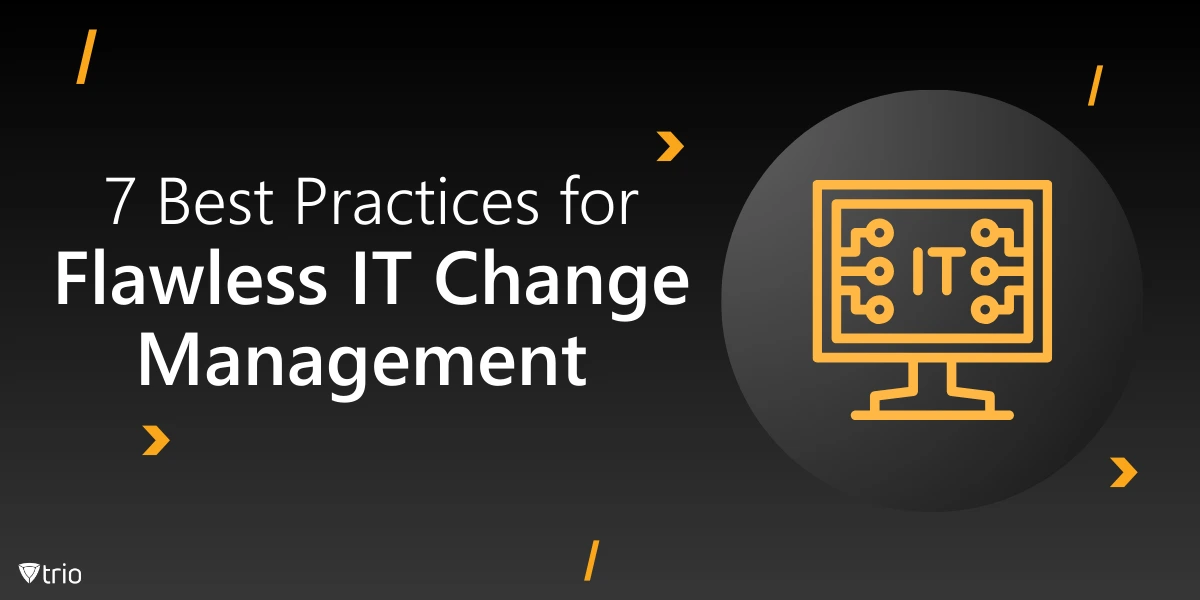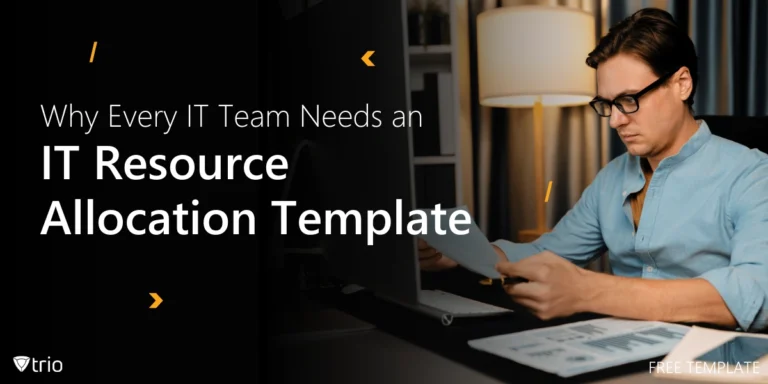Ever wonder what happens when a software update goes wrong, causing a system outage? That’s where IT change management comes in. It’s the structured process of managing updates, upgrades, and system changes to minimize disruption and keep everything running smoothly. Whether it’s a routine patch or an emergency fix, handling changes properly ensures processes run as expected.
Effective IT change management is essential for maintaining system stability and security. Poorly managed changes can lead to downtime, security breaches, or audit failures—potentially affecting your IT asset management strategy. These disruptions not only cause headaches but can also have serious financial implications. Forbes reports that downtime costs can reach up to $9,000 per minute for large organizations. In high-risk industries like finance and healthcare, it can exceed $5 million per hour, not including fines or penalties.
That’s why having a structured approach is vital, especially when it comes to IT change management in audit processes. To help you avoid these risks, let’s look into 7 best practices for flawless IT change management.
Understand the Different Types of Changes
To tackle IT change management, you have to understand the three main types of changes: Standard, Normal, and Emergency. Each one affects workflows differently. For instance, standard changes—like routine updates—are repetitive and predictable, which means they can and should be automated. Automating these removes unnecessary delays and ensures smoother operations.
When we look at normal changes when dealing with common IT problems, they require a bit more oversight because they aren’t as frequent. On the other hand, emergency changes happen when you’re dealing with issues such as a system outage or cybersecurity threat. Properly classifying changes like these is critical to avoid clogging your approval process with unnecessary red tape.
Design a Clear IT Change Management Process
A company requires a well-defined IT change management process to ensure smooth transitions and minimize disruptions. Having a structured change request flow prevents confusion and chaos. Ensure that all changes go through a proper request channel, with documentation detailing who will approve each change. This keeps things transparent and minimizes the chance of miscommunication.
Using tools to streamline this process makes it even smoother. Automated systems can track requests, approvals, and timelines. And don’t forget to tie your IT contingency plan into this process. That way, you’re prepared if things go sideways during or after a change.

Establish a Strong Change Advisory Board (CAB)
The Change Advisory Board (CAB) plays a crucial role in assessing risks tied to IT changes. This group evaluates the potential impact of each change and helps you avoid unnecessary disruptions. To keep things balanced, include a diverse group of stakeholders with expertise across different areas—this ensures all angles are covered.
Efficiency should be the top priority for your CAB. Meetings should be thorough but not bogged down by endless discussions. Establish clear decision-making protocols to keep the process moving. A well-structured CAB prevents bottlenecks while keeping your IT environment safe from unnecessary risks.
Use MDM Solutions and IT Change Management Software
Utilizing Mobile Device Management (MDM) solutions alongside IT change management software can streamline your change process. These tools simplify how changes are deployed across multiple devices. For instance, instead of manually configuring each device, MDM tools enable remote control of deployments to ensure consistency and reduce the margin of error.
A smart move is to pair MDM with the automation of IT processes, which can automate routine changes across hundreds of devices. With a staged rollout, you can deploy changes in phases, limiting the scope of potential issues and allowing you to address problems before they spread across the network.
For those considering new tools, Trio offers a free demo of new users. Trio provides MDM solutions that help organizations remotely manage, secure, and deploy changes across devices. Our software streamlines IT operations by automating updates and ensuring that devices comply with security policies, reducing the risk of widespread issues. Our demo helps you test how these solutions can work within your environment, guaranteeing seamless updates and reducing the risk of interruptions.
Monitor Changes Post-Implementation
Once a change is deployed, it doesn’t end there. Post-change monitoring is crucial to catch any issues that may arise. Utilizing IT change management tools can provide real-time tracking of system performance and security, securing that everything runs smoothly after the change.
Always have a rollback plan in place. If any red flags pop up during monitoring, a quick reversal can save you from bigger problems down the line. Consistent monitoring and a strong safety net are key to flawless IT change management.
Document Everything and Develop an IT Change Management Policy
Proper documentation is the backbone of any successful IT change management policy. Keeping a detailed log of every change ensures compliance and provides a roadmap for future reference. This documentation is essential when auditing your IT infrastructure or troubleshooting unexpected issues down the line.
For the best results, use automated tools that integrate with your IT management systems to maintain change logs effortlessly. This streamlines the process and makes sure nothing is missed, making your change management more transparent and easier to manage during audits or system reviews.

Communicate With Stakeholders and Users
Transparent communication is vital for any successful IT change. Before, during, and after changes, make sure all stakeholders and users are aware of what’s happening. Clear messaging about the potential impacts—whether downtime or new system functionality—helps set expectations and reduces confusion.
Good communication goes a long way in building trust with users. When people understand the changes and know what to expect, it minimizes frustration. Keeping them informed reassures everyone that the IT team has things under control and that the change will ultimately benefit them.
See Trio in Action: Get Your Free Trial Now!
Wrapping It Up
By following these practices, IT admins can build an effective IT change management process that minimizes risks and maximizes efficiency. From proper classification to using tools like MDM and clear communication, these strategies ensure smooth transitions without unnecessary headaches.
Start implementing these steps today, and you’ll not only reduce user frustration but also improve overall system performance. Smooth change management leads to a more stable IT environment, giving you the confidence to tackle future changes with ease.




